
Armenia’s Only Travel Guide You Need For A Great Trip in 11 Easy Steps
- Destinations Europe
Cruisit Team
- May 1, 2022
- 0
- 4625
- 71 minutes read
Armenia’s Background
The country of Armenia has a lengthy, stormy, and oftentimes sad history. Armenians have always fought to maintain their independence as it has been squeezed in by larger neighbors. If it wasn’t the Romans and the Parthians squabbling over land, it was the Russians and the Turks. But, after the dissolution of the Soviet Union, they regained their independence, however, with a population of nearly 4 million, with an additional 12 million Armenians living in other nations. This can only show how everyone was immigrating to other stable nations.
Armenia was the first country to officially embrace Christianity (early 4th century). Several empires ruled over the land, including the Roman, Byzantine, Arab, Persian, and Ottoman. It was thereafter annexed by Russia in 1828 and the USSR in 1920. The country’s officials are still obsessed with the long-running conflict with Azerbaijan over Nagorno-Karabakh, which is predominantly populated by Armenians. However, once both nations gained independence from the Soviet Union in 1991, the conflict erupted.
By May 1994, when a cease-fire was declared, Armenian troops controlled not just Nagorno Karabakh but also a large chunk of Azerbaijan proper. Because of the occupation, Turkey put an economic blockade on Armenia and closed its border with Azerbaijan in 1994. Rural communities are poverty-stricken as a result of that tragic past, and the economy has severely declined since the Soviet era. The money even fled the country, maybe that’s why there is no more pollution from chimneys The majority of the money is being provided by Armenians working abroad.
Nevertheless, Armenia obviously prefers to do things differently, as seen by its own alphabet and church, the Armenian Apostolic Church, which is also the world’s oldest Christian church. The land is strewn with ancient churches, monasteries, hermitages, and even a pagan temple. All of this historical drama, along with Armenia’s independence and magnificent location, has supplied the country with a variety of tourist attractions. This entire tale only emphasizes one thing: for fellow travelers, Armenia is a highly rich nation in history that should be at the top of your trip bucket list.
“From endless conquerors to a genocide,
Armenians boast natural landscapes and a
strong culture with an intriguing history”
Armenia is also a mountainous country, with Mount Ararat on the Turkish border affording spectacular scenery; this can be especially appealing for explorers. Routes wind up and down from the mountain top to the river valley. It’s an incredible sight.
Because Yerevan was planned, it boasts broad boulevards and vast squares. Unlike the rural towns, it feels rich, yet there is a lot of Soviet grey under the modern façade. To comprehend Armenian history and current culture, visit the theaters, museums, cafés, and enlightening genocide memorials.
Echmiadzin Cathedral is the oldest known cathedral and is equal to an “Armenian Vatican.” Climb Mt. Aragats for a spectacular perspective of Armenia and the surrounding Mount Ararat (in Turkey), where Noah’s Ark is said to have rested. Travel to Debed Canyon and see the World Heritage-listed monasteries of Haghpat and Sanahin. And don’t forget to appreciate the wonderful hospitality of the Armenians along the route!
But there’s more to entice you to go; there’s a lot of local culture in Armenia. Small towns with wooden homes; grass and cornfields; plum, peach, and apple orchards The modest estates and communal farms provide exquisite fruits and vegetables, and as a result, the food is excellent. Lots of fresh veggies, all of which tasted as if they had just been picked; baskets of fresh fruit; and bottles of possibly fatal fruit-based liquor. This means that the food is going to be fresh and tasty too.
- Yerevan, especially the genocide museum, is fascinating, and it’s a lot of fun to attempt to discover all the hidden churches, which are often concealed in apartment complex courtyards!
- Visit Echmiadzin, Armenia’s Holy See, also known as Etchmiadzin, to learn more about the Armenian Church.
- Climb Armenia’s highest peak, Mount Aragats.
- Visit the monasteries of Haghpat and Sanahin in the north.
- Turn south and travel to Khor Virap at the foot of Mount Ararat, the birthplace of Armenian Christianity.
- Wind your way south, passing Norovank Monastery with its stunning setting along the way, until you reach Tatev for the nicest vista you’ve ever seen.
- Accept an invitation from a welcoming Armenian family and share some delicious food and wine.
- Take a dip in Lake Sevan, a blue jewel in the center of Armenia.
- Most Europeans no longer require a visa to enter Armenia, and Americans should be allowed to enter visa-free as of 2015. Other nations can get a visa at the border.
- If you intend to enter Armenia by land, keep in mind that neither the Turkish nor the Azerbaijani borders are open. You must enter through either Georgia or Iran.
- Armenians speak their own language, Armenian. Russian is another option, however, English is not generally spoken. Don’t expect to get by with English.
- Most sites are well-served by buses and minibusses, making transportation a breeze.
- If you plan to visit Azerbaijan after Armenia, be aware that the Azerbaijanis may reject your admission if they notice an Armenian stamp on your passport. If they discover that you have visited the disputed territory of Nagorno-Karabakh, you will very probably be denied entrance!
- Nagorno-Karabakh is an Armenian-controlled enclave that was formerly part of Azerbaijan, and it is only accessible from the Armenian side. Remember that the rest of the world still considers Nagorno-Karabakh to be a part of Azerbaijan.
Crime & Scams
Armenia is a safe place to visit in general, with low crime rates and even pickpockets not being a common problem. However, it is recommended that you avoid flashing your belongings in crowded places such as bus or train stations or public transportation, and stay attentive at all times, particularly when crossing roadways. You are unlikely to be robbed or abducted, but keep your guard up and avoid dark and desolate regions of larger cities. But, accepting beverages from strangers or leaving your drink alone is never a good idea.
When withdrawing money from ATMs, especially ones that take VISA credit cards, be cautious: they may withdraw money from your account but not give it to you!
In general, transportation in Armenia is safe, however be cautious while taking a cab, especially at Zvartnots International Airport. There may be taxi drivers that try to overcharge you for a ride into town. Negotiate everything ahead of time, double-check your money, and don’t pay anything in advance.
All sites along the 1994 ceasefire line should be avoided due to the presence of snipers on both sides, with exchanges of fire continuing on a daily basis. Not to mention the major issue of unexploded bombs and mines.
Health
All visitors to Armenia should be immunized against tetanus, polio, and diphtheria (currently provided in the UK as an all-in-one vaccination, Revaxis, which lasts 10 years), as well as hepatitis A. Hepatitis A vaccine (for example, Havrix Monodose or Avaxim) consists of two shots spaced roughly a year apart. The shots last for 25 years, and can be taken right before leaving.
Travelers to remote areas, as well as those visiting friends and family, may be urged to get a typhoid fever vaccination. Furthermore, depending on what they are likely to be doing, certain tourists may be advised to obtain hepatitis B and rabies protection. Visitors should bring any necessary prescriptions with them because pharmaceuticals might be difficult to get. Even when transliterated, medications might have completely distinct names.
Healthcare centers are often inadequate, especially outside of Yerevan, and treatment for anything more than mild or basic illnesses is not suggested. Make sure you have appropriate travel health insurance and finances available to cover the expense of any medical care and repatriation overseas.
If you require emergency medical care while traveling, phone 103 and request an ambulance. If you are sent to a medical facility for treatment, you should contact your insurance/medical aid provider as soon as possible.
Shoulder Seasons
Autumn is the ideal season to visit Armenia since the temperature drops and the weather is pleasant enough for a leisurely tour of the country. There are few visitors, the days are long, bright, and pleasant, with lovely colors on the trees, and there are harvest fruits wherever you look. September is full of exciting events to visit, such as the Carpet Festival in Dilijan on September 8 and the Harissa Festival in Musaler on September 15. October and November are quiet months for travelers, and the country is preparing for winter, with few festivities to attend. It is, nevertheless, one of the greatest seasons to visit the capital and the countryside.
The month of March gradually welcomes the season of spring across the country. This is the season when nature awakens and cities begin to receive their first tentative carpet of green. April is the wettest month, with heavy rains lasting for a few days at a time. Armenia is best visited between late May and early June, which is another shoulder season.
High (Peak) Season
June is the peak month in Armenia, as rains are unlikely and nature is in full bloom. Visitors may enjoy different cultural and traditional activities, like as the Sheep Shearing Festival and the Bread in the Mountains Festival, in addition to seeing Armenia’s must-see attractions. In July, the temperature becomes hotter with low humidity, and it is also Armenia’s busiest month. August is often regarded as one of the warmest months of the year. However, the country continues to host a variety of events to keep both inhabitants and visitors entertained. Festivalgoers who appreciate culture, drink, or meat and barbeque will have a good time.
Off-Season
The winter months of December towards the end of February are considered low season, which implies that many cities are free of tourists during this time. In December, Armenia is calm, with fewer visitors visiting the nation. Winter sports enthusiasts may want to visit Armenia in January. February is an excellent time to visit snow-covered cities and monasteries. Khor Virap, which boasts a great view of the Ararat Mountain, is one of the most attractive spots in winter. Avoid the winter months if you are not a winter person and do not appreciate seeing new places in cooler weather.
By Plane
Zvartnots International Airport in Yerevan’s capital and Shirak International Airport in Gyumri, are two international airports in Armenia. Armenia’s major international airport is Zvartnots International Airport. It is the nation’s busiest, 15 km west of Yerevan. Currently, there are few airlines that fly directly to Armenia, to be specific, from 36 cities only.
By Train
Throughout the winter months (October to May), sleeper trains run every other night, and daily during the summer (June to September). The train travel will take around 10 hours and 30 minutes, but tickets are inexpensive, and the train is safe and convenient, so it’s a terrific option to get to Armenia.From Tbilisi and then a train to Armenia’s Yerevan.
The routes from Georgia are:
- Tbilisi-Yerevan is a 10-hour ride year-round.
- During the summer season, a 16-hour train journey connects Batumi and Yerevan.
Overland By Car
Two borders are open, from Iran and from Georgia where many enter. A large Russian army base protects against NATO aggression. Russian influence ensured that Armenia joined the Soviet free trade area rather than the EU.
- Georgia provides access to the Black Sea Ports of Batumi and Poti
- Iran provides access to the Persian Gulf
By Bus
A bus travels from Tehran to Yerevan, a trip lasting 24 hours. The bus departs from Tehran’s West Bus Terminal on a regular basis. There are also Bus routes departing from Georgia.
By Boat
Non-Exist
By Hitchhiking
It’s normal to hitchhike in Armenia, or “avtostop” as Armenians call it, although it’s not the most time-efficient method to go. Mostly because Armenians will insist on you stopping by for drinks and food before dropping you off. You can try to tip the driver, but they will most likely politely decline. To ensure the success of your vacation, we recommend that you dress cleanly, travel in groups of two or three persons, and have a mixed-sex group. Because Armenians are regarded as conservative, guys will likely avoid speaking directly to them if they are surrounded by other males, so don’t be upset.
By Bus
If you’re visiting Yerevan, use one of the bigger buses called “marshrutkas”. Depending on where you’re going, the cost of the journey will range from $0.50 to $5.00 USD. Before the marshrutka departs, someone will collect your fare. Although there is no set schedule, buses often depart when they are full or on the hour.
They may need to refuel the marshrutka throughout your journey. Because compressed natural gas and propane-powered cars are still in use in Armenia. As the bus fills up, don’t be shocked if you’re asked to exit.
By Train
The railway station in Yerevan is Sasuntsi Davit Station, which is built beside a statue of a great Armenian hero. Although most trains are ancient Soviet trains, a modern train to Gyumri is also available. The train takes you to Araks, Yeraskh, Gyumri, Ararat, and, as previously said, Georgia (Tiblisi and Batumi). There’s even a line that runs to Lake Sevan in the summer.
There are two kinds of seats on the old Soviet trains. First-class seats are comfortable, whereas second-class chairs are wooden. The second class tends to get more active depending on how long your travel is, so give it a shot.
Ticket prices for any class are relatively affordable. With online booking accessible, there are always seats available even 15 minutes before the train departs.
If you’re planning a weekend trip to Gyumri from Yerevan, we recommend using the new electric train. It operates from Friday through Sunday, departing Yerevan at 10 a.m. and arriving in Gyumri about noon. Tickets are $5 USD each. Allow yourself a little extra time for this one (20 to 30 minutes before departure should be fine).
By Car
It is not encouraged to rent a car in Armenia, not for safety reasons, but because it is relatively easy to travel around without one, including walking. Although hiring a car is feasible (the main car rental firms are available), automobile rental and insurance are relatively pricey in this country. However, hiring a car will allow you to travel more freely, without having to worry about missed connections or timetables.
Driving is done on the right side of the road (the UK and Japanese people can relate). Inside the city, the speed limit is 60km/h, and the speed limit outside the city is 110km/h. Roads are reasonably common in big cities, but in smaller villages, they are often unpaved and riddled with potholes and bumps. Also, be cautious because speed detection cameras are extensively used.
By Metro
The metro in Yerevan stretches 13 kilometers and includes roughly ten stops, with tickets costing about 100 AMD (or $0.20 USD). It’s also the coolest form of transportation in the summer, when the city gets quite hot. To get through the gates, go to the cashier and exchange your money for an orange token. Also, for some strange reason, you are not permitted to take photographs in the metro, despite the fact that most stations are rather picturesque.
There are three mobile network operators in Armenia:
- MTS Armenia’s Viva-MTS (previously Viva Cell MTS)
- Team (was Beeline, by Telecom Armenia)
- Ucom (previously Orange)
In Armenia, SIM card registration is required. As a result, you must purchase a SIM card from one of the three providers while displaying your passport. Prepaid SIM cards are expected to start at $3 with 3GB of internet access and occasionally more.
You also have an option of purchasing a prepaid eSim card like from Airalo, SimCorner, or Nomad. The companies provide data only plans to put on a phone that is eSim ready, so make sure you your phone is compatible. It is also possible to opt-in for a WiFi Hotspot from Solis. Check before you travel because they service certain destinations. Airalo by far has the most coverage of almost 180 countries.
Local Internet & WiFi
Internet connectivity is widely available in Armenia’s capital, Yerevan, and is spreading throughout the country. In general, the reliability and speed of internet connections in Armenia have increased in recent years. In Yerevan, most retail malls, cafés, schools, and institutions provide free Wi-Fi.
Top Places in Armenia

The Armenian Genocide Memorial Complex
The Armenian Genocide Memorial Complex, built-in 1967 on the hill of Tsitsernakaberd in Yerevan, is Armenia’s official memorial dedicated to the victims of the Armenian genocide. Every year on April 24, hundreds of Armenians gather at the memorial to remember those who perished in the genocide. Various notable figures from throughout the world have visited the memorial over the years.
Cascade Complex
The Cascade is a massive limestone stairway in Yerevan, Armenia. Seven escalators climb along the length of the structure beneath the external stairs. There are further exhibit rooms attached to several of the escalator landings that make up the Cafesjian Museum of Art. During the spring, summer, and early fall, the Cascade often hosts classical and jazz concerts.


Khor Virap
Khor Virap is an Armenian monastery on the Armenian Ararat Valley, near the restricted border with Turkey. Gregory the Illuminator was imprisoned here for almost 14 years by King Tiridates III of Armenia, making it both significant and a pilgrimage site. Nerses III the Builder erected a chapel on the site of Khor Virap in 642 as a gesture of reverence to Saint Gregory, and it was restored several times over the ages
Garni Temple
The Temple of Garni is the only pre-Christian Armenian Greco-Roman palladian architecture that still stands in Armenia and the former Soviet Union. The edifice was most likely erected in the first century AD as a shrine to the sun deity Mihr by King Tiridates I. Some experts believe it was a mausoleum rather than a temple and hence escaped the demolition of pagan monuments. It was destroyed by an earthquake in 1679 and then rebuilt between 1969 and 1975.

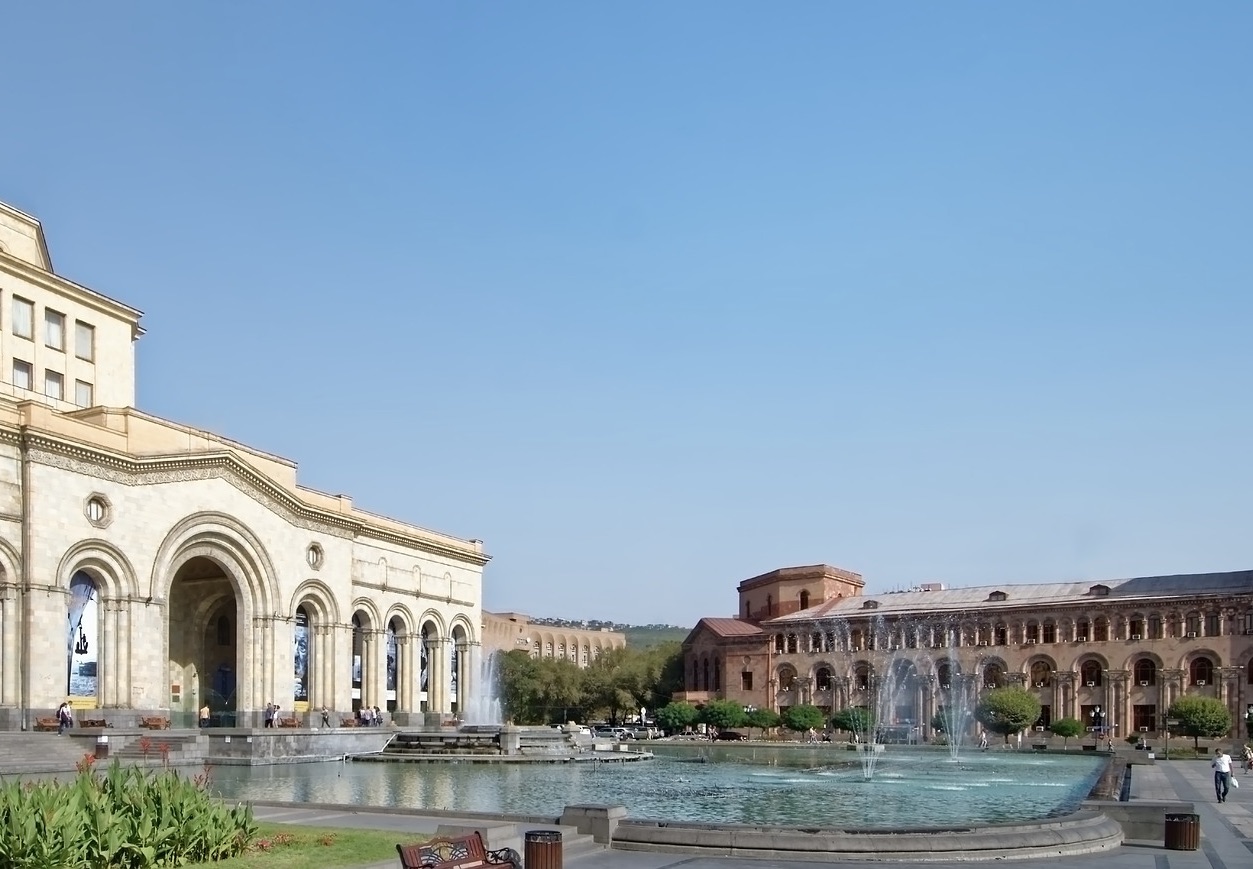
Republic Square
In Armenia’s Capital Yerevan, Republic Square is the highlight of its center. It is divided into two sections: a circular roundabout and a trapezoid-shaped part with a pool and melodic fountains. The area is flanked by five main buildings constructed of pink and yellow tuff in the neoclassical style, several of which have Armenian elements. During the Soviet era, it was known as Lenin Square, and a monument of Vladimir Lenin stood there. To commemorate Armenia’s independence, Lenin’s statue was removed and the area was renamed.
8-day Itinerary in Armenia (with extension options)
Days 1 to 2 (with possible 1 night extension)
Arrive to Gyumri
If you’re coming from Georgia, starting your trip to Armenia in Gyumri, the country’s second-largest city, is a lgoical choice, but even if you you’re not crossing the border, take the train after arriving to Yerevan and head straight to Gyurmi.
Gyumri was originally known as both Alexandropol (when it was part of the Russian Empire) and Leninakan (during Soviet times) and was once the biggest city in Armenia, with a population of over 500,000 people at its height. The city, however, was completely destroyed by the Spitak Earthquake in 1988, which killed at least 25,000 people.
Until today Gyurmi is recuperating and rebuilding from the disaster more than 30 years later, and it might appear “rough around the edges,” indicating that it isn’t Armenia’s most popular tourist site. However, if you want to witness how Armenians live and venture, we recommend you spend two nights in Gyurmi at least instead of one.

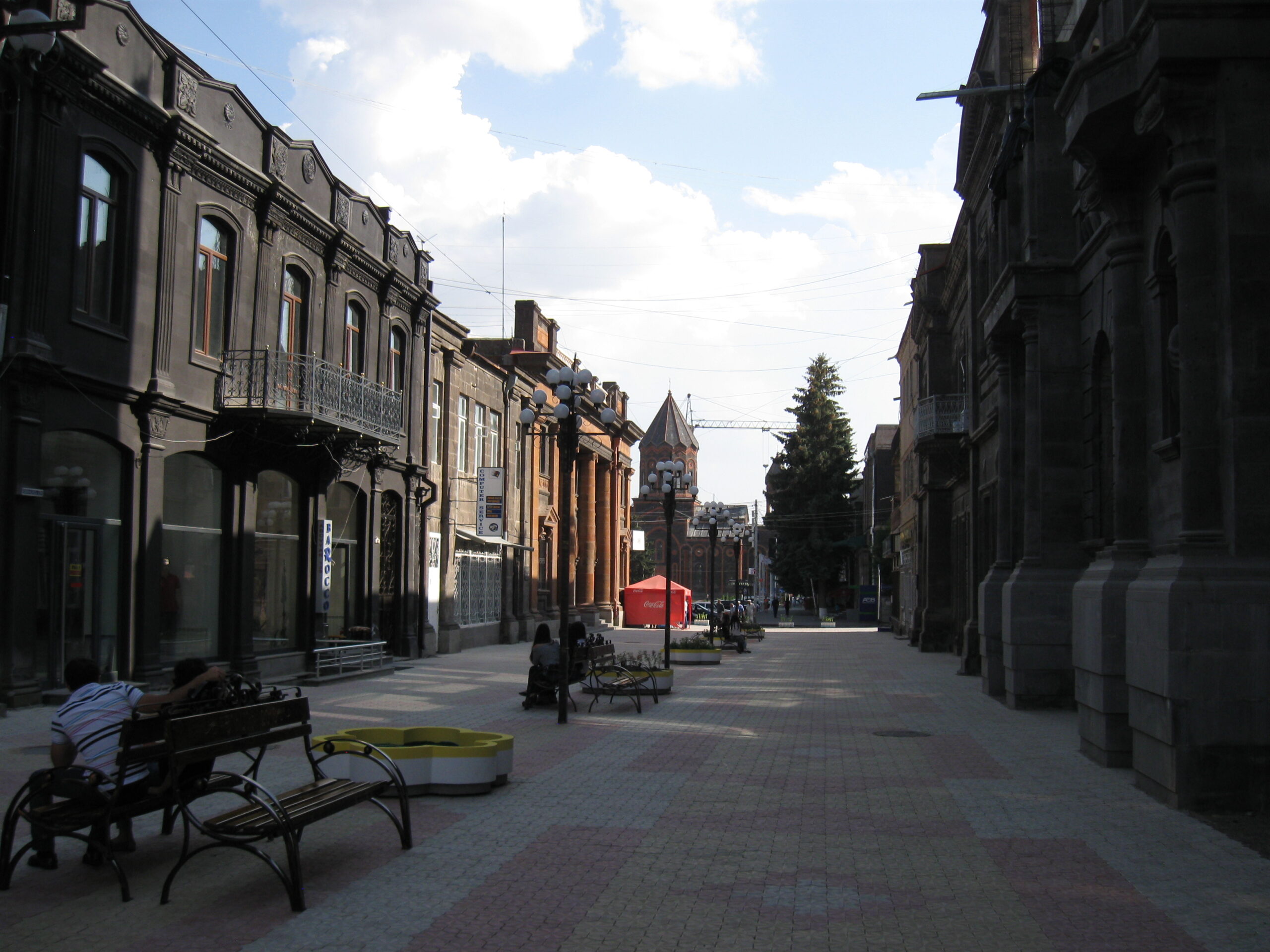

Despite the absence of typical tourist attractions, it is nevertheless worthwhile to go to the Black Fortress, via Central Park, and visit one of the superb cafés on Pushkin Street (we recommend Herbs & Honey).
Because it is Armenia’s second-largest city, it is well-connected across the nation, and getting to Yerevan from Gyumri is simple. There is a low-cost railway that runs between the two cities many times every day, as well as several marshrutky buses that run throughout the day.

- Backpacker:
- Budget: Lind Hostel & Guesthouse
- Mid-range: Tomu's Hotel
- High end:
This section will be added shortly.
There are several ways to move around Lubango. Taxis and minibusses are the most prevalent modes of transportation. There are, however, local buses and rental automobiles accessible at the airport.
By Taxi
Taxis are reasonably priced and can be hired practically with relative ease in town (mostly at the taxi station). Taxis can take you to numerous sites in the Lubango area, including Catumbela, Huambo, and Huila. They can also take you to places further away, such as Benguela or Luanda. The fare is not regulated, although, for a journey inside Lubango, it is normally between $150 and $300.
The actual charge may fluctuate depending on the time of day, tolls, works (possible routes), and various Angolan car firms.
By Bus
Mini-buses offer an alternative to taxis and they're more affordable than taxis if there are more than four people in your group. They operate on set routes that usually coincide with those of the local buses, so you will have to ask them beforehand where exactly they're going before boarding one.
There are several local bus companies operating in Lubango: Matola Transporte Aeoroportuario (MAT), Transporte Urbano da Huíla e Manica (TUMH) and Transfrica-Transporte Urbano Ltda (TTU). Local buses depart from their respective terminals every few minutes during peak times.
By Train
There is an outdated, neglected railroad station in Lubango, Angola. The structure resembles a modest, abandoned farmhouse, with a single story, a red tile roof, and several fractures in the stucco walls. The sole indication of life is a single man sitting at a desk in the center of the room, reading a newspaper and there won't be any other customers around. On the desk next to him is an old-fashioned cash register with a bell that chimes when you open it.
Despite its rundown look, this train station is very important to people who frequent it on a regular basis. The man behind the counter offers train tickets to those who want to travel anywhere in the country by rail; destinations include the provinces of Namibe, Moxico, and Huila. The trains are vintage and powered by diesel motors. Despite their antiquity, they are kept clean and well-maintained by the crew that drives them on a regular basis throughout their routes.
The inside is largely made of wood paneling, with a tattered red carpet running around the floor. Passengers can sit on either side of the aisle or stand if all seats are taken; owing to the large number of people who use this mode of transportation on a regular basis for work or education, this is not unusual.
Just note that traveling by train could take longer than usual, so make sure you span out your itinerary well to accommodate for the time lost on transit.
Days 3+
Head to Yerevan
Begin your day with the majestic Cascade complex, a flight of stairs spanning seven levels with excellent views of Yerevan and Mt Ararat in the distance from the summit on a clear day.
If the complex’s 572 stairs are too much for you, there are escalators inside that will take you to the top. When you’re done visit the towering Armenian Opera building, which was also designed by Alexander Tamanian, an excellent example of Armenian neoclassical architecture, although not as stunning as the one in Tbilisi.
If you’re interested, tickets to the opera, ballet, and symphony may be purchased for extremely low costs from adjacent ticket offices.
Despite Armenia being a deeply Christian country, nonetheless, one of the most stunning locations to see is the Blue Mosque, which is not far from the Opera House.


The courtyard and colorful dome of this Shia mosque, the city’s sole operable mosque, are definitely worth visiting. Following that, travel to Republic Square, Yerevan’s largest square. The Square is surrounded by Armenian neoclassical buildings built of Yerevan’s signature rose-hued stone, which explains why it is nicknamed “The City of Pink.”
You might want to get a bite to eat by now; if you want some true Armenian food, go to Ani Pandok. When you’re finished, head over to the Vernissage Market, a large open-air souvenir market where you could discover something unique to take home.
Unlike the typical tourist shops full of mass-produced magnets and pomegranate tchotchkes, here you may find local handicrafts like as amazing chess and backgammon sets, elegant silver jewelry, and exquisite pomegranate tchotchkes.
By buying from such local shops you’re supporting their trade, which helps preserve their traditions.


The St Gregory the Illuminator Cathedral should be your final stop on your first day in Yerevan. If you choose, you can end your journey by visiting Yerevan’s GUM Market, the city’s main market hall.
Finish your first day in one of the wonderful restaurants, cafés, or wine bars on Saryan Street. Alternatively, you might return to the Cascade complex, where there are several different eateries.

- Backpacker: Envoy Hostel
- Budget: The Yard
- Mid-range:
- High end:
This section will be added shortly.
There are several ways to move around Yerevan. Taxis, buses, metros, and more.
By Taxi
By Bus
Garni
Marshrutky to Garni depart every 30 minutes from Gai bus station and cost 250 AMD per person. It takes about 30 minutes to get there.
Etchmiadzin
Bus 203 from the Central Bus Station will get you there and back with limited expense and hassle.

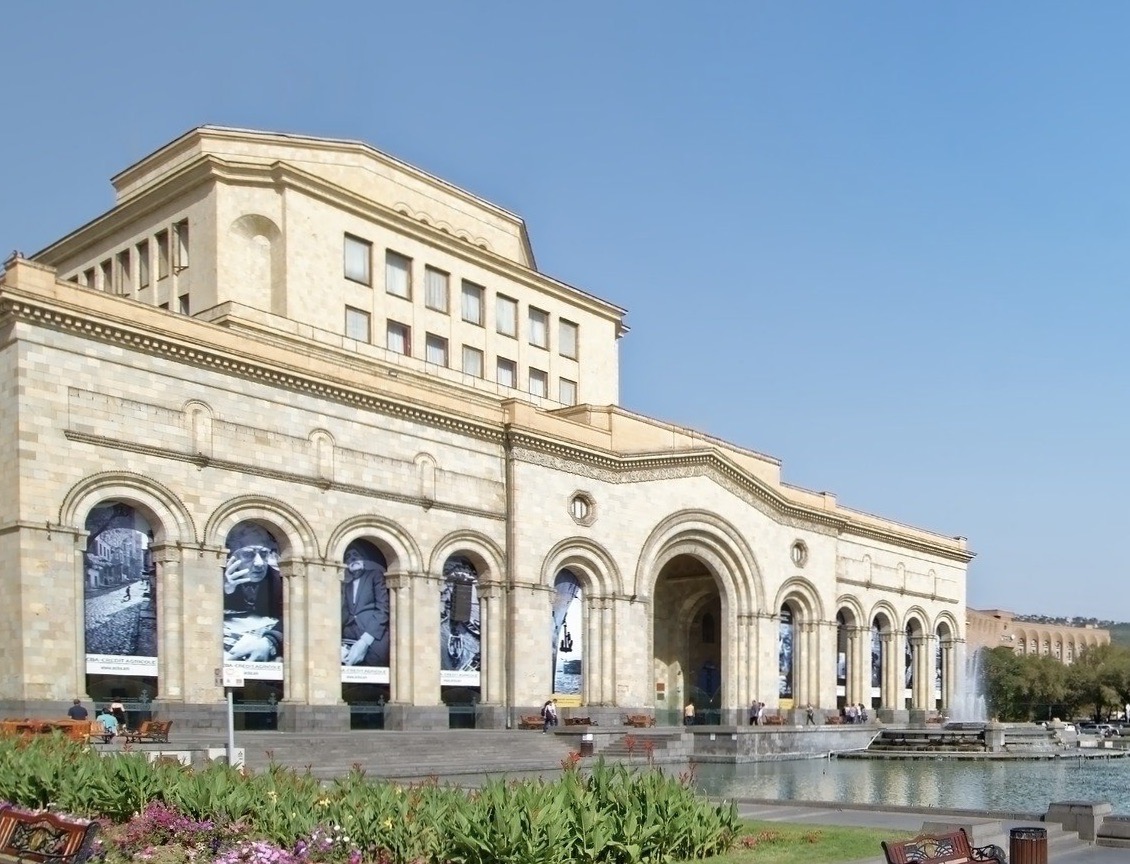
Days 4+
Continue Exploring Yerevan
Begin your day on a somber start by taking a cab to the Armenian Genocide Memorial and Museum, which is located just outside of the city center. The ride should cost no more than 400-700 AMD (about $0.80-1.50 USD). The monument and museum are both free to access, and they are both highly well-curated and powerful places to visit.
When visiting Armenia, it is essential to understand about the country’s worst period, during which up to 1.5 million people were slaughtered.
In front of the museum, there is also a garden with a tree planted for each foreign official who has formally recognized the Ottoman horrors of 1915-1923 as genocide. A plaque also honors the 31 nations and the European Union that have formally recognized the Armenian Genocide.
Stop for a drink and a bite to eat before heading to the Armenian History Museum on Republic Square. However, as of May 2019, sections of this museum are under redevelopment, and many tourists discovered it closed in 2021.

If you’re lucky enough to find it open (by now), it’s an excellent spot to stop by to learn more about Armenia’s history beyond the genocide. The museum also has the world’s oldest shoe, which was discovered in Areni-2, or the “bird’s cave,” in the country’s south.
After the museum, if you want to learn more about Yerevan from a local’s point of view, join the Yerevan Free Walking Tour, which meets every day at 5 p.m. in front of the museum.
Lasting around 3 hours and requires previous registration; nonetheless, the tour is a fantastic opportunity to learn about Yerevan’s history and culture from a kind and knowledgable native. Have dinner at a restaurant of your choice will round out your day.
Days 5+
A day trip out of Yerevan
On your third day in Yerevan, take one of the day excursion choices from the capital, which are all reasonably straightforward to organize, whether individually or through an organized tour.
Option 1: Visit the neighboring village of Garni, which is home to an old Garni temple, strange rock formations known as the Symphony of Stones, and a lovely monastery.
Option 2: Take an individual day excursion from Yerevan to Etchmiadzin (Vagharshapat). This town is regarded as the “Vatican of Armenia” and is the headquarters of the Armenian Apostolic Church, which is distinct from the Catholic, Orthodox, or Anglican churches. It also houses the Etchmiadzin Cathedral, which is said to be the oldest cathedral not just in Armenia, but in the world.
Other Options: If Exploring more of what Armenia has to offer than simply the areas surrounding Yerevan is what you seek, an organized trip is the best way to do it. Day travels from Yerevan can take you to the Khor Virap Monastery, the Noravank Monastery, Lake Sevan, the Hin Areni Winery, or even the Tatev Monastery.
Check out the last days 6 to 7 before making a choice as Lake Sevan is one of the trips

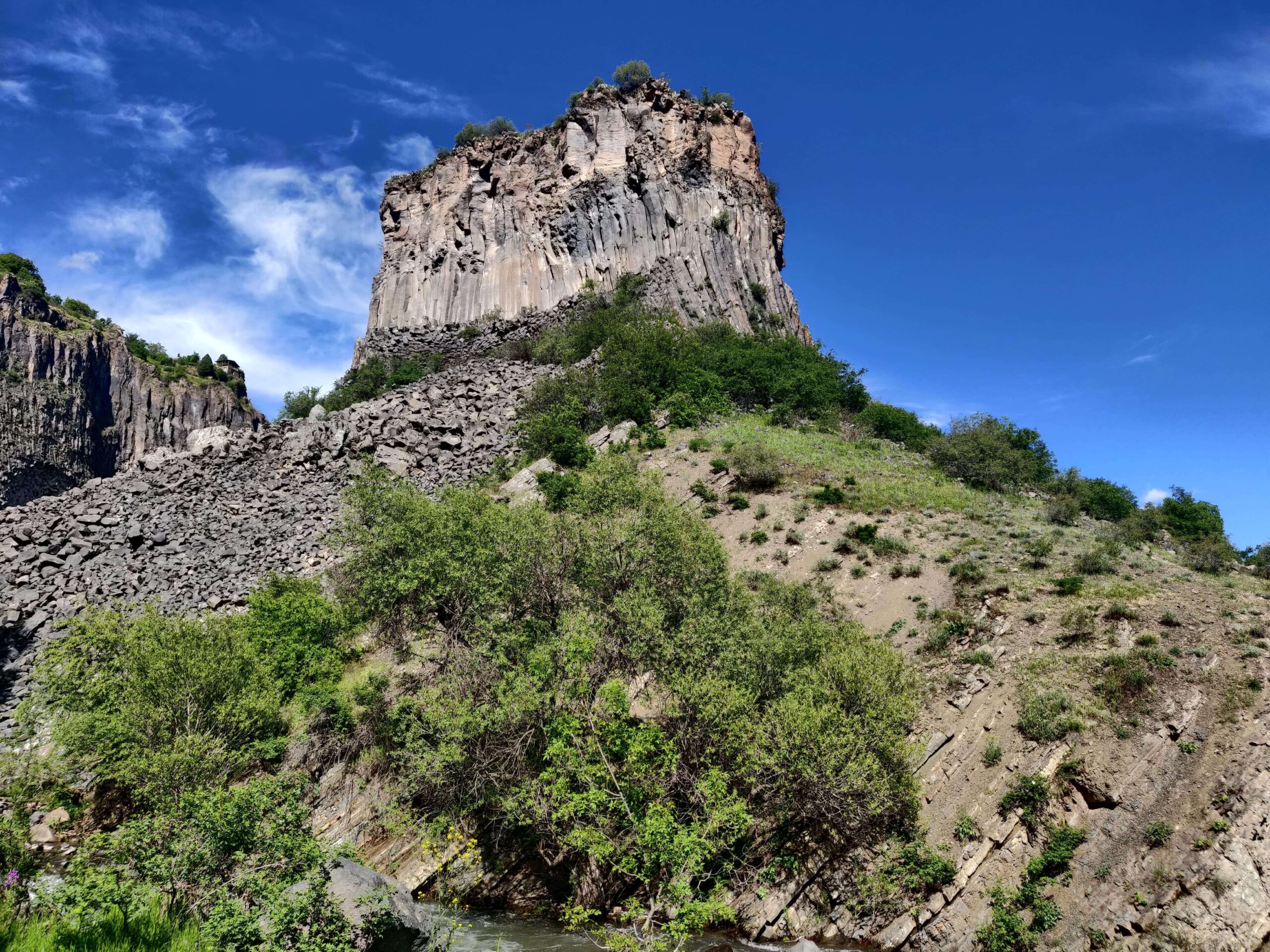

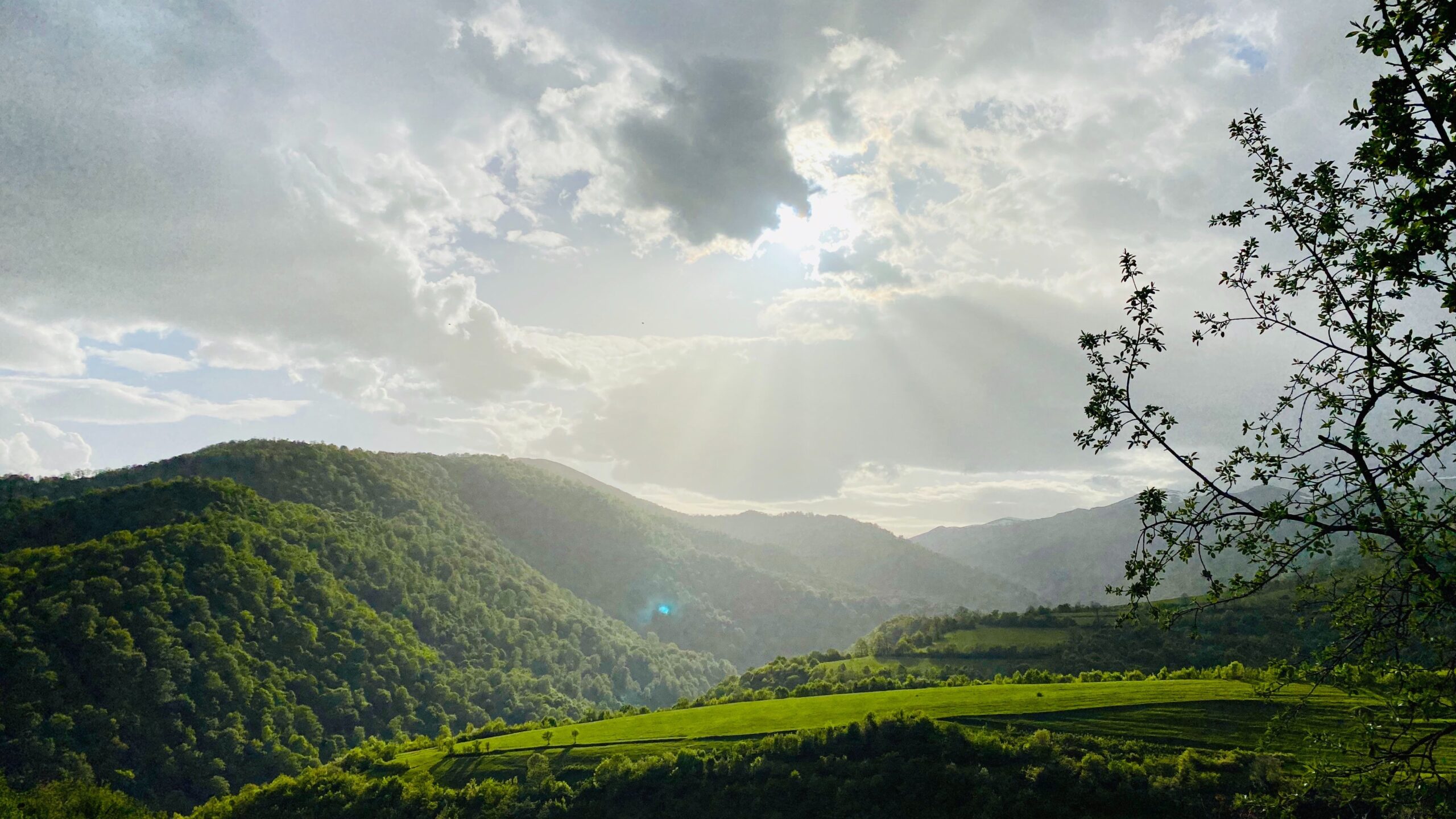
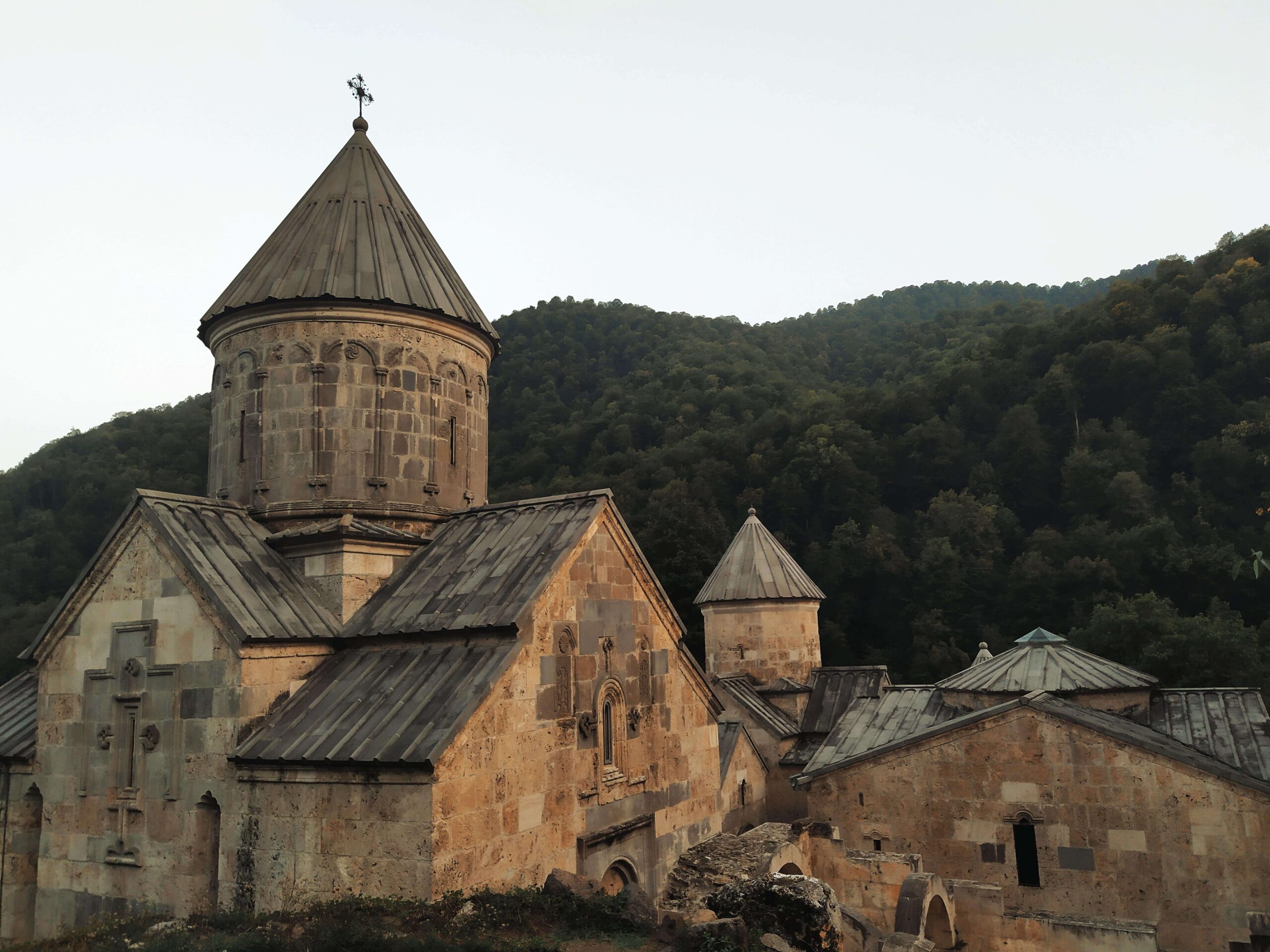
Days 6 to 7+
Off to Dilijan
After breakfast, proceed to the next stop on your Armenia itinerary: Dilijan.
Dilijan, known as the “Switzerland of Armenia,” is only a 90-minute marshrutka trip from Yerevan, yet it feels like an other universe. Dilijan is an excellent area to get away from the city and spend a couple of days relaxing in the laid-back rural and mountain ambiance, going for a few treks, or visiting some local monasteries.
While there aren’t many notable locations to see or activities to do in Dilijan, it’s still a terrific spot to come if you want to experience a different side of Armenia and appreciate the pastoral side of the nation. Two days is more than enough time to spend, you’ll be able to go on a hike or two, go to Lake Sevan, and visit different chapels around the area.
- Backpacker:
- Budget: Green Dilijan B&B
- Mid-range: Chalet Dilijan Hotel
- Luxury:
This section will be updated shortly.
Days 8+
Departure Day
You will be getting back to Yerevan after your breakfast so you can catch your flight back home, or maybe on the next trip.

The Most Popular Food in Armenia
Armenian cuisine is among the world’s oldest, with some Armenian dishes dating back over two millennia. The cuisine of Armenia reflects its location, having been influenced by traders and conquerors from the Mediterranean, Middle East, Eastern Europe, and the Levant. It consists of a broad composition of meals and is characterized by intriguing flavor combinations. Featuring locally cultivated fresh ingredients that produce a distinct and unique flavor.

Zhengyalov hats
Although Armenians adore meat, they are not against a little of veggie food. Zhengyalov hats are ideal for vegans and vegetarians from Artsakh, Armenia, as they include 12 different species of greens, some of which are unique found in Armenia. The meal is unique to an area of Armenia where the environment is ideal for cultivating a variety of green vegetables.

Khorovats
Khorovats is grilled meat. In Armenia, men are often in charge of meat preparation, such as slicing and skewering. No celebration is complete without khorovats, which are indeed lovingly handmade with care. Served with grilled vegetables and potatoes, which are popular among Armenians. So, if you go to Armenia, be sure to try this delicious and well-known dish.

Manti
Manti is another one of those Armenian meals that will have you wanting more. It’s a meal made out of small miniature dough boats filled with meat. Mostly made of ground lamb or beef, chopped onion, and parsley. The mantis is cooked in the oven till golden brown. The red pepper and tomato paste are then combined with water and used to baste the manti before placing it back in the oven. The meal is accompanied by yogurt and garlic. It’s delicious and a must-try Armenian meal.

Lahmajun
Lahmajun (known as Lahmajeen in Lebanon) is one of the country’s most popular comfort meals, and it’s one you really must taste. It’s thought to have originated in Levantin. The dough foundation is normally spherical and extremely thin, and it is covered with sautéed minced beef, finely chopped onions, garlic, and peeled smashed tomatoes before being baked. The mix of the crunchy bread and the spicy meat creates a flavorful dish.

Churchkhelas (Sujuk)
Churchkhelas are sausage-shaped candies that are made from walnuts strung on long strings and heavily covered with fruit syrup. Grape, apricot, pomegranate, and almonds are the key components. It is commonly consumed as a snack or dessert, and it has a rich, fruity flavor. As a result, it’s a low-sodium delight with no harmful fats or cholesterol.
What's the Travel Budget for Armenia?
Flights
- Flights start at roughly $180 from nearby countries. Tickets however on average cost around $900 and can cost more depending on which class and from which country you depart.
Accommodation
- Nomad Backpacking style travelers can expect to spend around $100 for a week
- Budget travelers can expect to spend around $170 for a week
- Mid-range travelers can expect to spend around $340 for a week
- Luxury travelers can expect to spend around $550 for a week
Food Budget (Three meals and drinks)
- Nomad Backpacking style travelers can expect to spend around $12 per person per day
- Budget travelers can expect to pay around $17 per person per day
- Mid-range travelers on average would cost $25 to $35 per person per day
- Luxury travelers can expect to pay around $45 to $65 per person per day
Overall Budget Styles (Not including Flights, Tours, Transportation, or Car Rental)
- Nomad Backpacking style travelers can expect to spend around $210 for a week
- Budget travelers can expect to spend around $300 for one person for a week
- Mid-range travelers can expect to spend around $600 for one person for a week
- Luxury travelers can expect to spend around $1050 for one person for a week
Flights
- Flights start at roughly $180 from nearby countries. Tickets however on average cost around $900 and can cost more depending on which class and from which country you depart.
Accommodation
- Nomad Backpacking style travelers can expect to spend around $100 for a week
- Budget travelers can expect to spend around $170 for a week
- Mid-range travelers can expect to spend around $340 for a week
- Luxury travelers can expect to spend around $550 for a week
Food Budget (Three meals and drinks)
- Nomad Backpacking style travelers can expect to spend around $12 per person per day
- Budget travelers can expect to pay around $17 per person per day
- Mid-range travelers on average would cost $25 to $35 per person per day
- Luxury travelers can expect to pay around $45 to $65 per person per day
Overall Budget Styles (Not including Flights, Tours, Transportation, or Car Rental)
- Nomad Backpacking style travelers can expect to spend around $210 for a week
- Budget travelers can expect to spend around $300 for one person for a week
- Mid-range travelers can expect to spend around $600 for one person for a week
- Luxury travelers can expect to spend around $1050 for one person for a week
Flights
- Flights start at roughly $180 from nearby countries. Tickets however on average cost around $900 and can cost more depending on which class and from which country you depart.
Accommodation
- Nomad Backpacking style travelers can expect to spend around $100 for a week
- Budget travelers can expect to spend around $170 for a week
- Mid-range travelers can expect to spend around $340 for a week
- Luxury travelers can expect to spend around $550 for a week
Food Budget (Three meals and drinks)
- Nomad Backpacking style travelers can expect to spend around $12 per person per day
- Budget travelers can expect to pay around $17 per person per day
- Mid-range travelers on average would cost $25 to $35 per person per day
- Luxury travelers can expect to pay around $45 to $65 per person per day
Overall Budget Styles (Not including Flights, Tours, Transportation, or Car Rental)
- Nomad Backpacking style travelers can expect to spend around $210 for a week
- Budget travelers can expect to spend around $300 for one person for a week
- Mid-range travelers can expect to spend around $600 for one person for a week
- Luxury travelers can expect to spend around $1050 for one person for a week
Flights
- Flights start at roughly $180 from nearby countries. Tickets however on average cost around $900 and can cost more depending on which class and from which country you depart.
Accommodation
- Nomad Backpacking style travelers can expect to spend around $100 for a week
- Budget travelers can expect to spend around $170 for a week
- Mid-range travelers can expect to spend around $340 for a week
- Luxury travelers can expect to spend around $550 for a week
Food Budget (Three meals and drinks)
- Nomad Backpacking style travelers can expect to spend around $12 per person per day
- Budget travelers can expect to pay around $17 per person per day
- Mid-range travelers on average would cost $25 to $35 per person per day
- Luxury travelers can expect to pay around $45 to $65 per person per day
Overall Budget Styles (Not including Flights, Tours, Transportation, or Car Rental)
- Nomad Backpacking style travelers can expect to spend around $210 for a week
- Budget travelers can expect to spend around $300 for one person for a week
- Mid-range travelers can expect to spend around $600 for one person for a week
- Luxury travelers can expect to spend around $1050 for one person for a week
If you want to know what to pack, read this list below:
- This is a conservative country that can get extremely cold, dress accordingly
- Raincoat or Light Waterproof Jacket
- Hiking Boots or Sturdy Sneakers (Shoes You Don’t Mind Getting Wet)
- Sunscreen
- Insect Protection – Repellent and Clothing
- Sunglasses and Sun Hat
- Water Shoes
- Beach Towels/Sarong
- Dry Bag
- Money Belt or Cross Bag
- Portable Medical Kit
- Flashlight or Headlamp
- Copies of your passport.
- Get all the needed vaccinations before traveling
- A power bank is a must in any travel.
- Always have some cash with you just in case there are no ATMs and if you are dealing with a business that solely accepts cash
- Get yourself an adapter for your gadgets
- 1 toothbrush
- 1 tube of toothpaste
- 1 razor
- 1 package of dental floss
- 1 small bottle of shampoo
- 1 small bottle of shower gel
- 1 towel
- Deodorant
- Band-Aids
- Hydrocortisone cream
- Antibacterial cream
- Earplugs
- Tylenol
- Hand sanitizer (germs = sick = bad holiday)
- A key or combination lock
- Zip-lock bags
- Plastic bags (great for laundry)
- Universal charger/adaptor
- LifeStraw (A water bottle with a purifier)
- 1 dry shampoo spray & talc powder
- 1 hairbrush
- Makeup you use
- Hairbands & hair clips
- Feminine hygiene products
Clothing For Boys
- 1 pair of jeans or khaki pants
- 1 pair of shorts
- 1 bathing suit
- 5 T-shirts
- 1 long-sleeved T-shirt
- 1 pair of flip-flops
- 1 pair of sneakers
- 6 pairs of socks
- 5 pairs of boxer shorts
Clothing For Girls
- 1 swimsuit
- 1 sarong
- 1 pair of stretchy jeans
- 1 pair of leggings
- 2-3 long-sleeve tops
- 2-3 T-shirts
- 3-4 spaghetti tops
- 1 light cardigan
Want to plan your own trip, here are some of the best resources that can help you
- Skyscanner – They search small websites and budget airlines that larger search sites tend to miss. They are hands down the number one place to start.
- Momondo – This is another favorite flight search engine because they search such a wide variety of sites and airlines. Always check here too.
- Booking.com – The best all-around booking site that constantly provides the most affordable and lowest rates. They have the widest selection of budget accommodation.
- Couchsurfing – This website allows you to stay on people’s couches or spare rooms for free. It’s a great way to save money while meeting locals who can tell you the ins and outs of their city. The site also lists events you can attend to meet people (even if you’re not staying with someone).
- Intrepid Travel – If you want to do group tours, go with Intrepid. They offer good small group tours that use local operators and leave a small environmental footprint.
- Grassroots Volunteering – For volunteering, Grassroots Volunteering compiles a list of good local volunteer organizations that keep the money within the community.
- Get Your Guide – Get Your Guide is a huge online marketplace for tours and excursions. They have tons of tour options available in cities all around the world, including everything from cooking classes, walking tours, street art lessons, and more! It has the world’s largest collection of things to do with more than 30,000 activities in 7500 destinations.
- SafetyWing – Safety Wing offers convenient and affordable plans tailored to digital nomads and long-term travelers. They have cheap monthly plans, great customer service, and an easy-to-use claims process that makes it perfect for those on the road.
- Trip Advisor: Check the reviews and then book your accommodation. TripAdvisor is where you go when you want to compare prices with multiple accommodation providers.
- VRBO: is the main search engine to use when you are looking for a home or apartment rental. It can sometimes be cheaper than hotels and it is the best way to stay in areas that offer a more local feel.
- Hostelworld: With one of the largest databases of hostels in the world, Hostelworld is the go-to site when you are looking for budget accommodation.
- Rome 2 Rio: If you want to see how to get somewhere by plane, train, bus, ferry, or car Rome2Rio lays it all out for you as well as related costs.
- World Nomads Insurance: When traveling you should always have travel insurance. We have found the best bang for your buck is by far World Nomads.
Final Thoughts on Armenia
Armenia is one culturally deep, vibrant, and beautiful land that is worth traveling to. Would you?
If you’ve been to Armenia let us know how your trip was in the comments below.